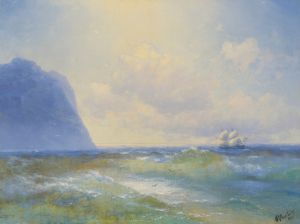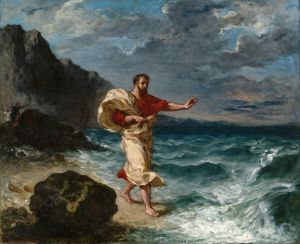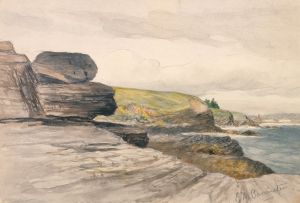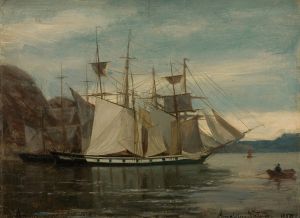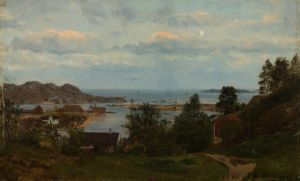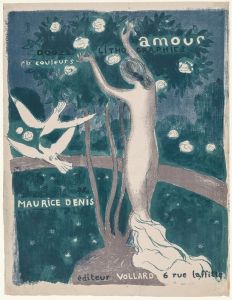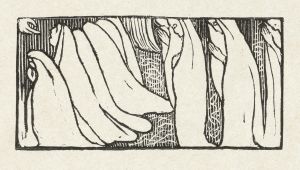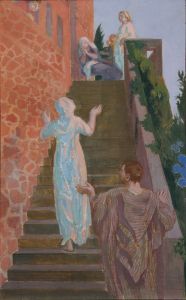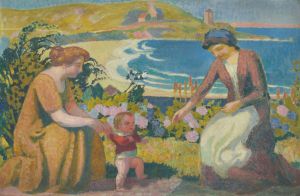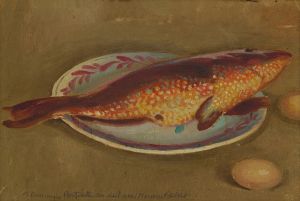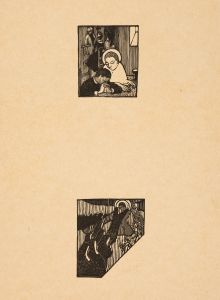
Étretat
A hand-painted replica of Maurice Denis’s masterpiece Étretat, meticulously crafted by professional artists to capture the true essence of the original. Each piece is created with museum-quality canvas and rare mineral pigments, carefully painted by experienced artists with delicate brushstrokes and rich, layered colors to perfectly recreate the texture of the original artwork. Unlike machine-printed reproductions, this hand-painted version brings the painting to life, infused with the artist’s emotions and skill in every stroke. Whether for personal collection or home decoration, it instantly elevates the artistic atmosphere of any space.
Maurice Denis, a prominent French painter and a key figure in the Symbolist and Nabi movements, created the painting "Étretat" in 1909. Denis is well-known for his theoretical writings on art and his role in the transition from Impressionism to modern art styles. His work often emphasizes the importance of decorative elements and the spiritual aspects of art, which are evident in his depiction of landscapes and religious themes.
"Étretat" captures the scenic beauty of the coastal town of Étretat in Normandy, France, renowned for its dramatic cliffs and natural arches. This location has been a popular subject for many artists, including Claude Monet and Gustave Courbet, due to its striking geological formations and the play of light on the sea and rocks. Denis's interpretation of Étretat reflects his unique style, which combines elements of Symbolism with a decorative approach.
In this painting, Denis employs a harmonious color palette and simplified forms, characteristic of his work during this period. The composition likely focuses on the interplay between the natural landscape and the artist's personal vision, rather than a strict representation of the scene. Denis's approach often involves flattening the perspective and using broad areas of color to convey mood and emotion, rather than detailed realism.
Maurice Denis was deeply influenced by his Catholic faith, and his works frequently explore themes of spirituality and the divine in nature. While "Étretat" is primarily a landscape, it may also reflect Denis's belief in the sacredness of the natural world. His paintings often suggest a sense of tranquility and contemplation, inviting viewers to engage with the scene on a deeper, more introspective level.
Denis was a founding member of the Nabi group, which included artists like Pierre Bonnard and Édouard Vuillard. The Nabis were known for their avant-garde approach, emphasizing the importance of color and form over realistic representation. Denis's work, including "Étretat," exemplifies these principles, as he sought to create art that was both aesthetically pleasing and spiritually meaningful.
Throughout his career, Maurice Denis remained committed to the idea that art should be a reflection of the artist's inner world and beliefs. His paintings often blur the line between reality and imagination, encouraging viewers to see beyond the surface and consider the underlying themes and emotions. "Étretat" is a testament to Denis's ability to transform a familiar landscape into a work of art that resonates with personal and universal significance.
Maurice Denis's contributions to art extend beyond his paintings; he was also an influential art theorist and writer. His ideas about the decorative and symbolic nature of art have had a lasting impact on modern art movements. "Étretat" is just one example of how Denis's artistic vision continues to inspire and captivate audiences, offering a glimpse into the mind of an artist who sought to bridge the gap between the seen and the unseen, the material and the spiritual.





